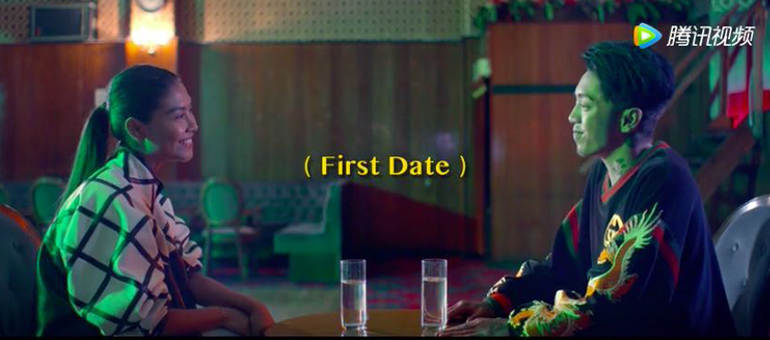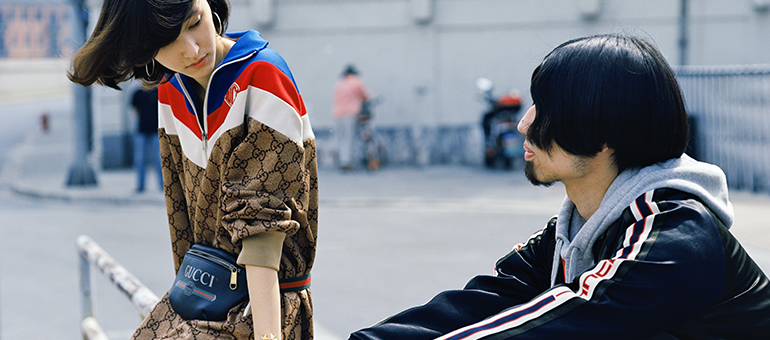
Campaigns
The Gucci Formula: When Storytelling in China is Done Right
by
Jiaqi Luo | September 12, 2018
As European luxury labels struggle to adapt their marketing messages to a growing group of young Chinese shoppers, Gucci stands out from the pack with its relatable storytelling efforts.
The luxury industry is never short of newcomers to the digital scene, aspiring to emulate the success of Gucci in China. While many brands find the Chinese digital landscape complex and difficult to navigate, Gucci’s ability to consistently be the talk of China’s fashion scene is interesting to note.
How did Gucci do it? Many critics have attributed it to Alessandro Michele’s creative leadership and his redefinition of the brand’s aesthetic. But in China today, beautiful products alone are not enough. Even luxury powerhouses like Gucci need an equally (if not more) compelling storyline to capture the attention of demanding, young, consumers. Besides its style revamp, embracing millennial values in all its communication efforts contributed a great deal to Gucci’s success in the Middle Kingdom.
Interested in more insights on navigating the Chinese digital landscape?
Does embracing millennial values simply mean giving up tradition and catering to the whims and fancies of young consumers? Not according to Gucci. Inclusivity and authenticity manifests in many different forms across various mediums for the Maison, as displayed across its official campaign, collaborations and magazine editorials over the past year.
2018 Official Campaign: Inclusivity Is The New Luxury
In late 2017, in a departure from conventional European beauties (read: models), Gucci put together an eclectic mix of individuals for its 2018 “Roman Rhapsody” campaign. Of these personalities, one made Chinese netizens sit up and take notice: Sonia Zhou. A middle-aged Chinese immigrant in Rome, Zhou is the owner of popular Chinese restaurant Hangzhou da Sonia, and a friend of Alessandro Michele’s. The two had struck up a friendship when Michele dined at her restaurant.
Posts titled “Immigrant restaurant owner from Zhejiang made it to Gucci”, and “Chinese pride in high fashion” flooded the Chinese Internet. However, the inclusion of Zhou for the campaign was not intended to simply create buzz in the Chinese market. In fact, the “Roman Rhapsody” campaign sought to celebrate genuine non-conformists and eccentrics by featuring real people in Rome’s neighborhoods. By using actual residents of Rome instead of professional models, the campaign displayed Gucci’s attempt in bringing inclusivity to the fashion stage. Zhou’s identity as an immigrant also served a symbol of modern, multicultural Rome – which makes her a good fit with the campaign’s narrative.

Sonia Zhou in Gucci’s Roman Rhapsody campaign.
Photo: Gucci
Appointing models of a specific ethnic background to appeal to a certain demographic is nothing new. But Gucci’s act of telling the real story of a Chinese immigrant in Rome is new – and quite culturally progressive. The “Roman Rhapsody” campaign didn’t set out to target Chinese consumers specifically. But through including a Chinese story, it generated organic buzz in Chinese social media and had cultural impact.
Collaboration with GQ China: Celebrating Being “Extra”
Earlier this August, Gucci collaborated with GQ China’s official WeChat account GQ Lab and published the post “成年人经典演技赏析/Fake It Till You Make It.” As one of China’s top WeChat thought leaders, GQ Lab has a large following of young urbanites. The post started with a series of comic strips that transited into a presentation of Gucci’s Dapper Dan collection, and ended with a mini-film. A link directing readers to Gucci’s official Dapper Dan page was also included. The article generated over 100,000 reads.
Despite being a form of sponsored content, GQ Lab’s collaboration with Gucci did not come across as contrived at all. It was as humorous and insightful as the content typically found on the account. The collaboration summed up Gucci’s Dapper Dan collection in one word, “浮夸”, which can be loosely translated to mean excessive (or “extra”, in millennial speak) and flashy.
After making a dig at the culture of excessiveness, the post reads: [This collection] is suitable for adults who need that something “extra” to perk them up; who enjoy, and can pull off, the “extra”-ness of streetwear. You need to have that “extra” attitude and manner, as well as deep pockets, to wear this collection.” While this sort of communication language might not fall under conventional expectations of luxury marketing, it works well given the tone and context of this collection. Designed in collaboration with the legendary Harlem tailor it is named for, the Gucci Dapper Dan line doesn’t take itself too seriously either.

Gucci Dapper Dan collection.
Photo: Gucci


“Gucci勇气” video story
Photo: @GQLab’s official WeChat
GQ Lab also created a mini-film titled “Gucci勇气 “ and included it in the same post. The title here is a play on the brand’s name “Gucci”, and the Chinese phrase “鼓起 (gǔ qǐ)”. Both sound similar when pronounced, making the phrase “鼓起勇气” sound like “Gucci勇气” (which translates to pluck up courage). Correspondingly, the mini-film tells a story of a boy plucking up the courage to right swipe a girl in a dating app.
Through this collaboration, GQ successfully wove the “Gucci” spirit into a millennial story. The content offered great social exposure without feeling contrived, thanks to a high degree of creative freedom given by the brand.
Vogue China’s 25 Ways to Gucci: Shanghai’s Super Families

25 Ways to Gucci: Shanghai’s Style Remix
Photo: Vogue
Being part of the four “25 ways to Gucci” stories around the world, Vogue China’s Shanghai chapter featured six cross-generational families wearing the picks of Gucci’s Pre-Fall ’18 collection. Though this is a global editorial spread by Vogue, the photographs taken show a level of inclusivity by depicting real people in real places.
From official campaigns to magazine editorial, the case of Gucci’s in China shows that luxury communication can be done in a culturally relevant way. Its 2018 campaign touches on issue of immigration and the concept of a modern, multicultural Europe; its collaboration with GQ China showcases a highly creative narrative to launch Gucci’s Dapper Dan collection and drive engagement; and the Vogue story “25 ways to Gucci”, throws the spotlight on the updated interpretation of what a Gucci family could look like in urban China.
What Executives Can Learn from Gucci:
1. Engage top Chinese storytelling talents. Appealing visuals is a must, but China’s consumers now also demand an equally fascinating storyline.
2. Storytelling for impact. For many brands, luxury communication is still confined to the topics of heritage and craftsmanship. While retaining prestige and tradition is important, embracing a more local, authentic brand communication will generate more reader engagement.
3. Stay agile and open. This means granting more creative freedom to influencers that brand choose to collaborate with, reacting more quickly social trends that fit the brand’s narrative, and not being afraid to touch on cultural issues.
Cover Image: Pinterest

